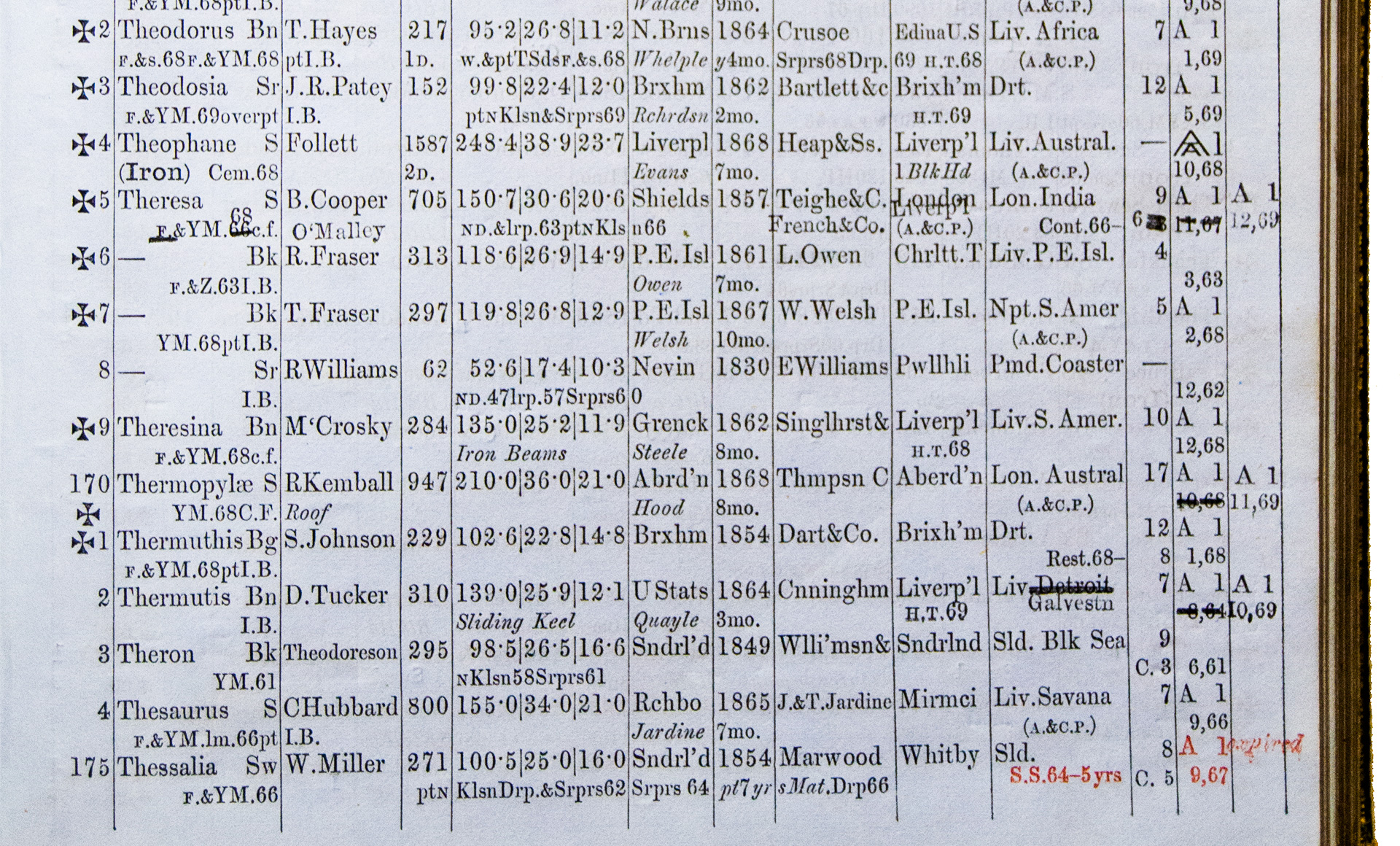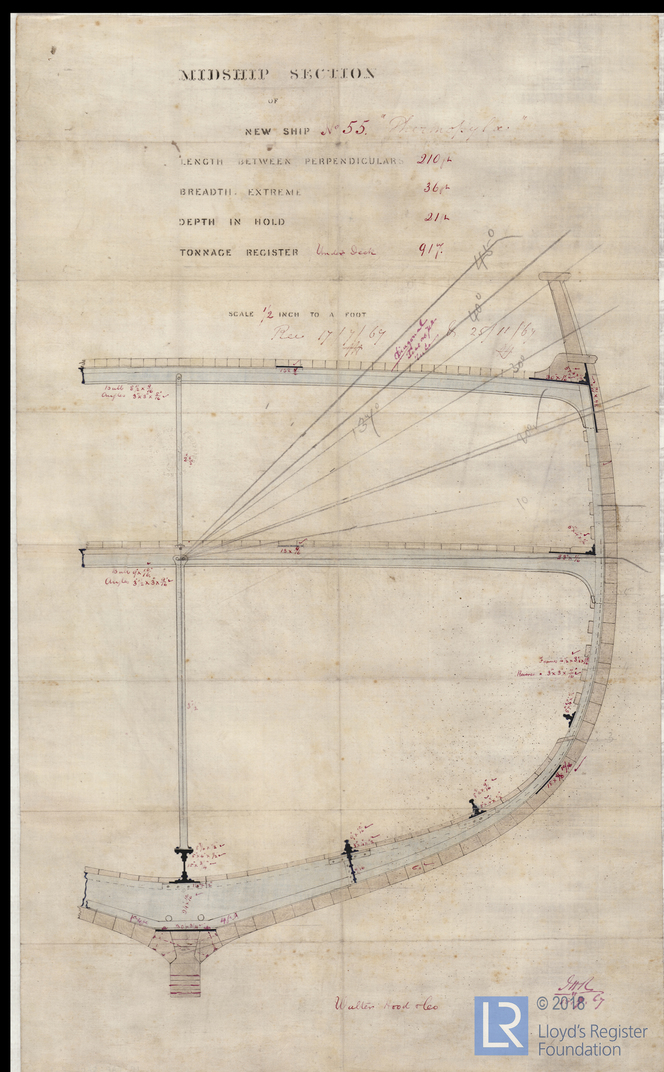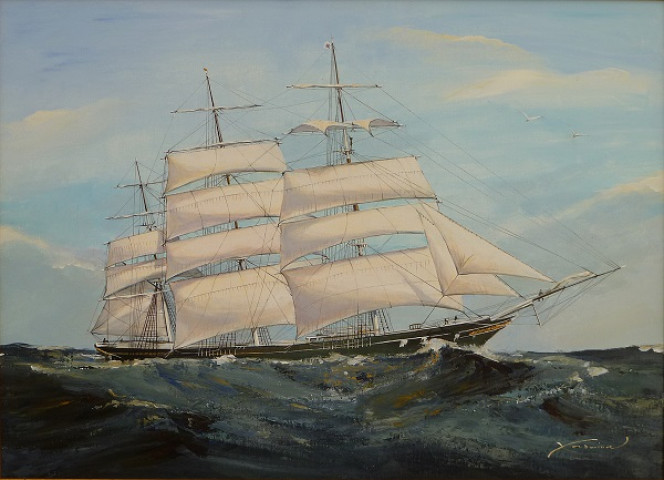Interpreting the Register Books
19th Century Register Books
A rivalry between shipowners and underwriters culminated in 1799 with the production of a Register published by the Shipowners, known as the 'Red Book' due to its red cover, while the Underwriters continued to produce their 'Green Book' so called for its green cover.
The rivalry between the two Registers continued for a number of years and brought both parties to the verge of bankruptcy. In 1834, on the recommendation of a Committee of Inquiry, the two Registers joined forces to become Lloyd's Register of British & Foreign Shipping.
From 1874, the Register Books started to list all seagoing vessels of more than 100 tons, regardless of the classification society. Discover hidden meanings exploring this page.








